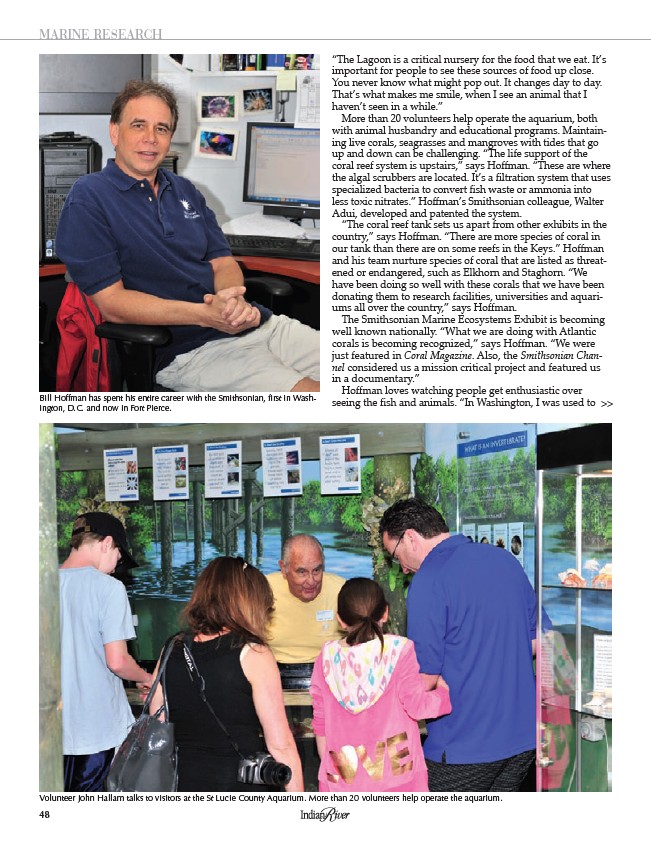
MARINE RESEARCH
Bill Hoffman has spent his entire career with the Smithsonian, first in Washington,
48
“The Lagoon is a critical nursery for the food that we eat. It’s
important for people to see these sources of food up close.
You never know what might pop out. It changes day to day.
That’s what makes me smile, when I see an animal that I
haven’t seen in a while.”
More than 20 volunteers help operate the aquarium, both
with animal husbandry and educational programs. Maintaining
live corals, seagrasses and mangroves with tides that go
up and down can be challenging. “The life support of the
coral reef system is upstairs,” says Hoffman. “These are where
the algal scrubbers are located. It’s a filtration system that uses
specialized bacteria to convert fish waste or ammonia into
less toxic nitrates.” Hoffman’s Smithsonian colleague, Walter
Adui, developed and patented the system.
“The coral reef tank sets us apart from other exhibits in the
country,” says Hoffman. “There are more species of coral in
our tank than there are on some reefs in the Keys.” Hoffman
and his team nurture species of coral that are listed as threatened
or endangered, such as Elkhorn and Staghorn. “We
have been doing so well with these corals that we have been
donating them to research facilities, universities and aquariums
all over the country,” says Hoffman.
The Smithsonian Marine Ecosystems Exhibit is becoming
well known nationally. “What we are doing with Atlantic
corals is becoming recognized,” says Hoffman. “We were
just featured in Coral Magazine. Also, the Smithsonian Channel
considered us a mission critical project and featured us
in a documentary.”
Hoffman loves watching people get enthusiastic over
seeing the fish and animals. “In Washington, I was used to
D.C. and now in Fort Pierce. >>
Volunteer John Hallam talks to visitors at the St Lucie County Aquarium. More than 20 volunteers help operate the aquarium.